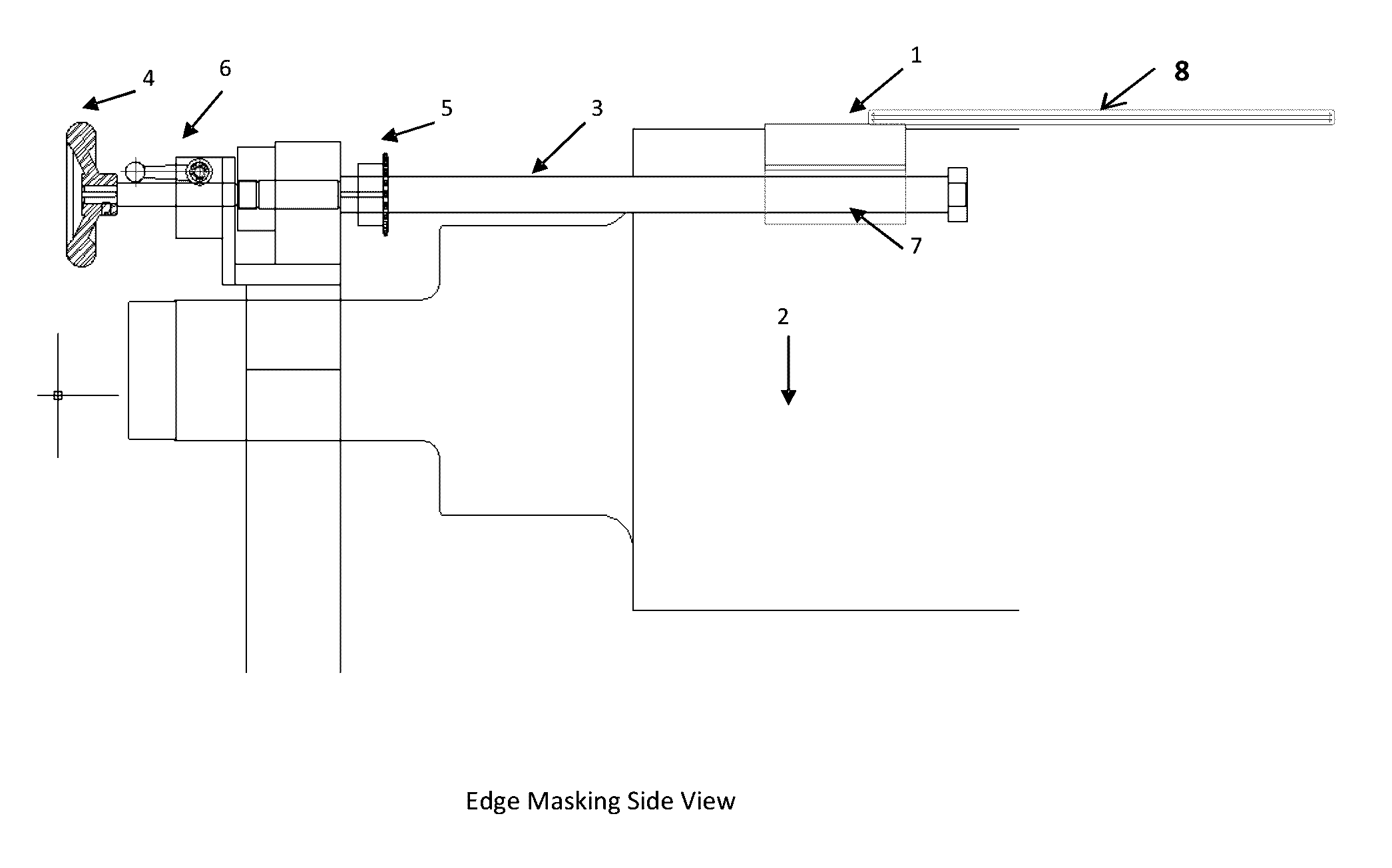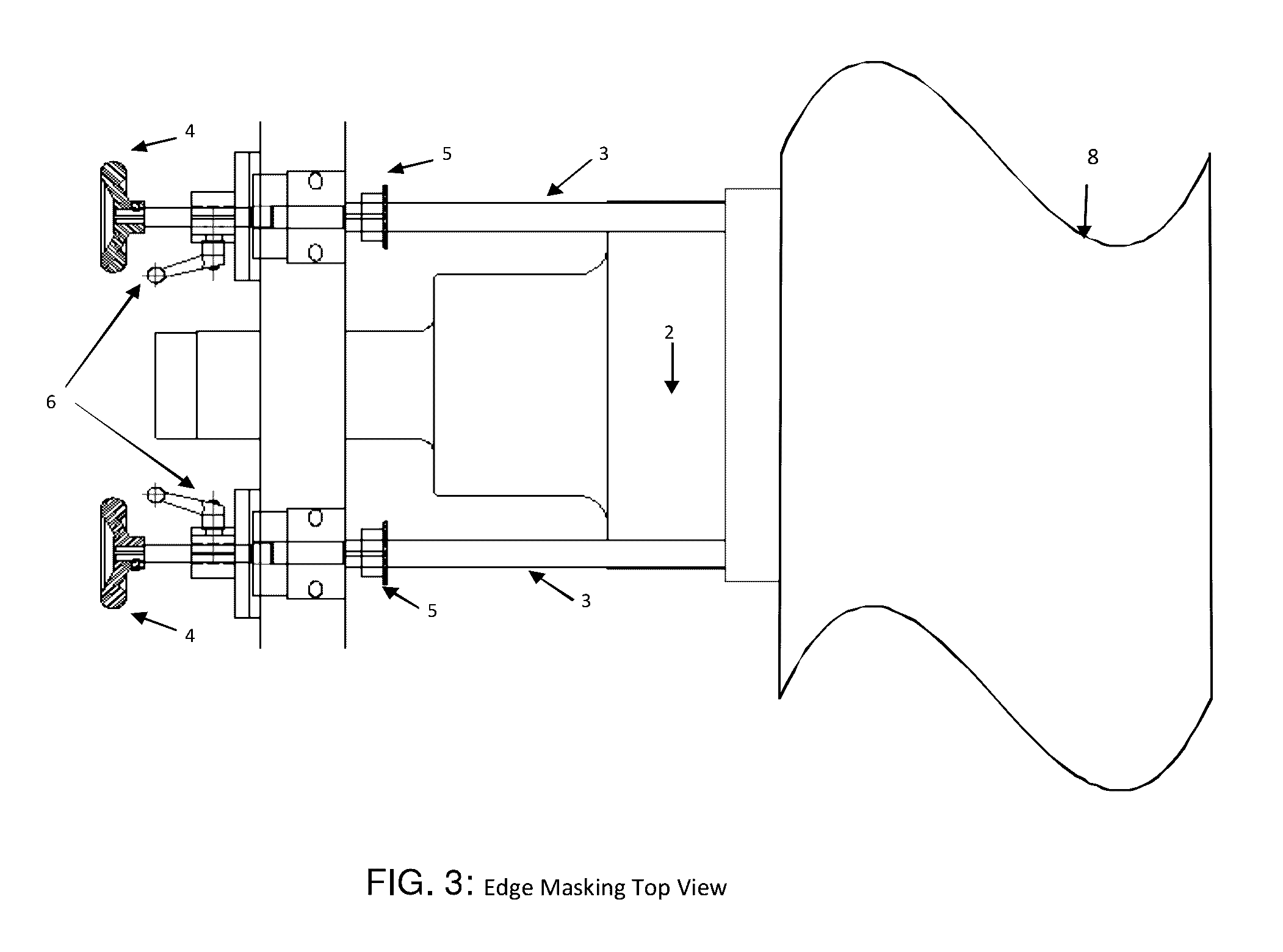Gravure roll edge masking system for in-line film coating
a masking system and film coating technology, applied in coatings, printing, liquid/gas/vapor textile treatment, etc., can solve the problems of not revealing the edge masking system that may be employed in the process, affecting the quality of the coating, and preventing the build-up of coating, so as to minimize production downtime and maintenance, and prevent the effect of coating build-up
- Summary
- Abstract
- Description
- Claims
- Application Information
AI Technical Summary
Benefits of technology
Problems solved by technology
Method used
Image
Examples
example 1
[0042]An in-line coated BOPP film was produced. The edge of the film was 1100 gauge (11 mil or 275 μm) thick and the center of the film was 875 gauge (8.75 mil or 218.75 μm) thick. A reverse kiss-coat gravure process was used to apply about 12 microns of wet thickness of an aqueous solution of nominal 14% NVS. The thick edge was 40 mm wide while a 1 / 16 inch (1.5875 mm) thick 304 stainless steel plate with a 1 / 16 inch 1.5875 mm) thick DELRIN® underplate was mounted as described within the description. The DELRIN® plate extended 1 / 16 inch (1.5875 mm) beyond the stainless plate. This method initially provided 51 mm of uncoated area, and was initially unstable within the process, with a breakage of the product within 7 minutes. After manually adjusting, using the adjustable ACME nut and lead screw design, the masking to 43 mm of uncoated area, the process became stable with no further disruptions for the remainder of the campaign. After 24 hours run time, very little wear was observed f...
example 2
[0044]An in-line coated BOPET film was produced. The edge of the film was 115 gauge (1.15 mil or 28.75 μm) thick and the center of the film was 90 gauge (0.9 mil or 22.5 μm) thick. A reverse kiss-coat gravure process was used to apply about 5.3 microns wet thickness of an aqueous solution of nominal 14% NVS. The thick edge was 38 mm wide while a 1 / 16 inch (1.5875 mm) thick 304 stainless steel plate with a 1 / 16 inch (1.5875 mm) thick PFTE filled DELRIN® underplate was mounted as described within the description. For this application, the PFTE filled DELRIN® underplate was procured for lower friction (COF or coefficient of friction) and enhanced wear resistance. The DELRIN® plate extended 2 inches beyond the stainless plate, to ensure that no coating was included within the trim for further recycling processes. A total of 90 mm was left uncoated on the film edges with this design. For this design minimal maintenance of cleaning the masking every 12 hours was required as to remove smal...
PUM
 Login to View More
Login to View More Abstract
Description
Claims
Application Information
 Login to View More
Login to View More - R&D
- Intellectual Property
- Life Sciences
- Materials
- Tech Scout
- Unparalleled Data Quality
- Higher Quality Content
- 60% Fewer Hallucinations
Browse by: Latest US Patents, China's latest patents, Technical Efficacy Thesaurus, Application Domain, Technology Topic, Popular Technical Reports.
© 2025 PatSnap. All rights reserved.Legal|Privacy policy|Modern Slavery Act Transparency Statement|Sitemap|About US| Contact US: help@patsnap.com



